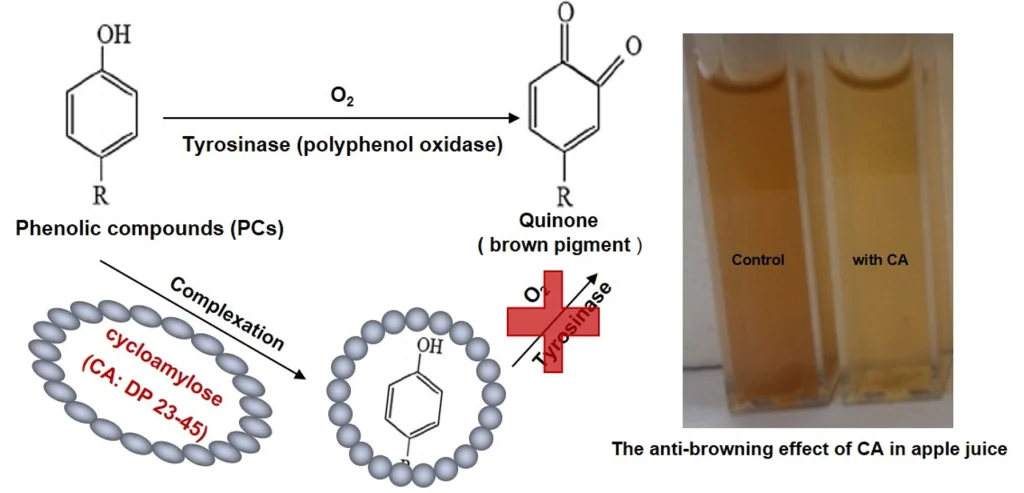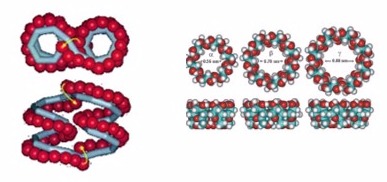Starch
- Clean label starch
Natural starch typically has limitations for industrial applications due to its low functionality and stability, which often lead to quality deterioration. Consequently, research on chemically modified starches has been conducted to improve these properties. However, most consumers tend to avoid purchasing food products treated with chemical substances. As a result, there has been a growing trend among manufacturers to produce clean-label starches that exhibit properties similar to those of modified starches.
In our laboratory, we aim to develop clean-label starches through physical treatments such as ultrasound and hydrothermal processing, as well as enzymatic modifications. We conduct physicochemical analyses of these starches and explore their potential applications in various industries, such as gelling agents and other functional uses.


- Molecular inclusion complexation
Cycloamylose, cyclodextrin, and branched dextrin derived from starch are capable of forming inclusion complexes, which can encapsulate various bioactive compounds. Among these, cycloamylose is particularly notable for its ability to form complexes with substances of various sizes and its high solubility in cold water, which enables the formation of more stable colloids in aqueous solutions.
In our laboratory, we focus on optimizing the production process of cycloamylose and enhancing the bioaccessibility and stability of the resulting inclusion complexes. The physicochemical properties are analyzed using techniques such as HPAEC, HPLC, MALDI-TOF, SEM, and rheometry. Additionally, an in vitro model simulating the human digestive tract is applied to evaluate bioaccessibility.


